What Every Contractor Should Know About Spray Rigs
Whether you specialize in foundations such as drywall or finishing touches such as interior painting, every contractor should have a good understanding of how their texture machines and spray rigs work. Not only does this knowledge help you to ensure that you’re using the right equipment for the job, but it enhances your credibility as a professional and boosts your marketability.
From platforms to customizable parts and from hosesets to rig capacities, this resource article will give you the essential information necessary to truly set yourself apart as a competent and conscientious contractor. In this blog, we’ll review the three main types of spray rigs and their features to see which is best suited for your area of expertise and your primary project tasks.
To learn more about airless sprayers and max-efficiency texture machines, or to explore more helpful blog resources for professional contractors, please visit American Spray Technologies online today!
Spray Rig Platforms
The foundation of any machine is a good place to start when learning about its qualities and how they compare to other models, and spray equipment is no exception. In general, there are three main building types, or platforms, of spray rigs: trailer, skid, and electric. We review each briefly below.
Electric — Electric spray machines, as the name suggests, are set apart by their power source. This rig platform is perfect for industrial jobs. Not only are they modular, easy to install, and intuitive to operate, but their capacity and capabilities come in a wide range of specifications. From 100 gallons to 350 gallons, there is a spray machine for every contractor and every sector of factory-based work.
Skid — Skid sprayers are a great option for covering lots of surface area in a small amount of time, which is why they’re often employed on agricultural properties and large-scale construction sites. Compared to a portable electric model, this configuration is a bit bulkier. Size demands that this platform uses diesel and gas rather than electric, but it also offers highly powerful engine options (starting around 20-25 HP).
Trailer — You won’t find a rig configuration larger than a trailer, which boasts both heavy-duty durability and low-maintenance parts. At AST, our Big Rig Trailers have a 3200-lb.-burst-rated hose, a stainless steel texture strainer, easily serviceable wheels and axles, and even an optional butterfly valve to stop the flow of product to pump.
You can find more information on electric, skid, and trailer rigs, as well as other spray and texture machines at www.SprayRig.com.
Spray Rig Size
The size of your spray machine rig will depend on the tasks for which you intend to use it, as well as your available options for transporting and assembling the unit. The smallest rig size we offer at American Spray Technologies is a portable and practical 150 gallons, while our largest piece of spray equipment has a hefty 350-gallon capacity.
-
150-250 gallons: Ideal for residential and high-rise construction tasks; easy to carry and doesn’t take up a lot of space; not optimized for extended use unless refilled
-
200-300 gallons: Best for large residential plots or commercial facilities; covers more ground in less time; may be harder to transport on certain job sites
-
300-350+: Optimized for agricultural and industrial-scale jobs; commonly employed for pesticide and herbicide applications, high-acreage landscaping, and large-scale construction
Spray Rig Engines and Compressors
Your engine power directly affects your rate of air compression and speed of performance. The higher your horsepower is, the stronger your spray will be. For non-industrial projects and residential jobs such as spray painting or liquid plaster applications, you don’t need more than 5 HP and certainly not more than 10. For industrial applications and large-scale construction, such as texture spraying and chemical treatments, you’ll want to be looking for engines in the 20-25 HP range and several hundred PSI.
Hoseset Configuration
Unless you’re getting add-on features for your spray rig, the hoseset configuration will be the last component of your specialized machine to consider. Depending on your industry, you may need a specific gun type, switch type, and hose length for your configuration, so be sure to confirm these details prior to making any major decisions on your professional equipment and spray rig specs.
Consider A Customized Spray Rig
Now that you’ve taken the time to learn more about spray rigs and the parts that go into them, why not build your own? American Spray Technologies has an online rig builder for your convenience, so you can make sure your rig is constructed exactly as it should be from start to finish. Visit AST online or contact us directly today!
